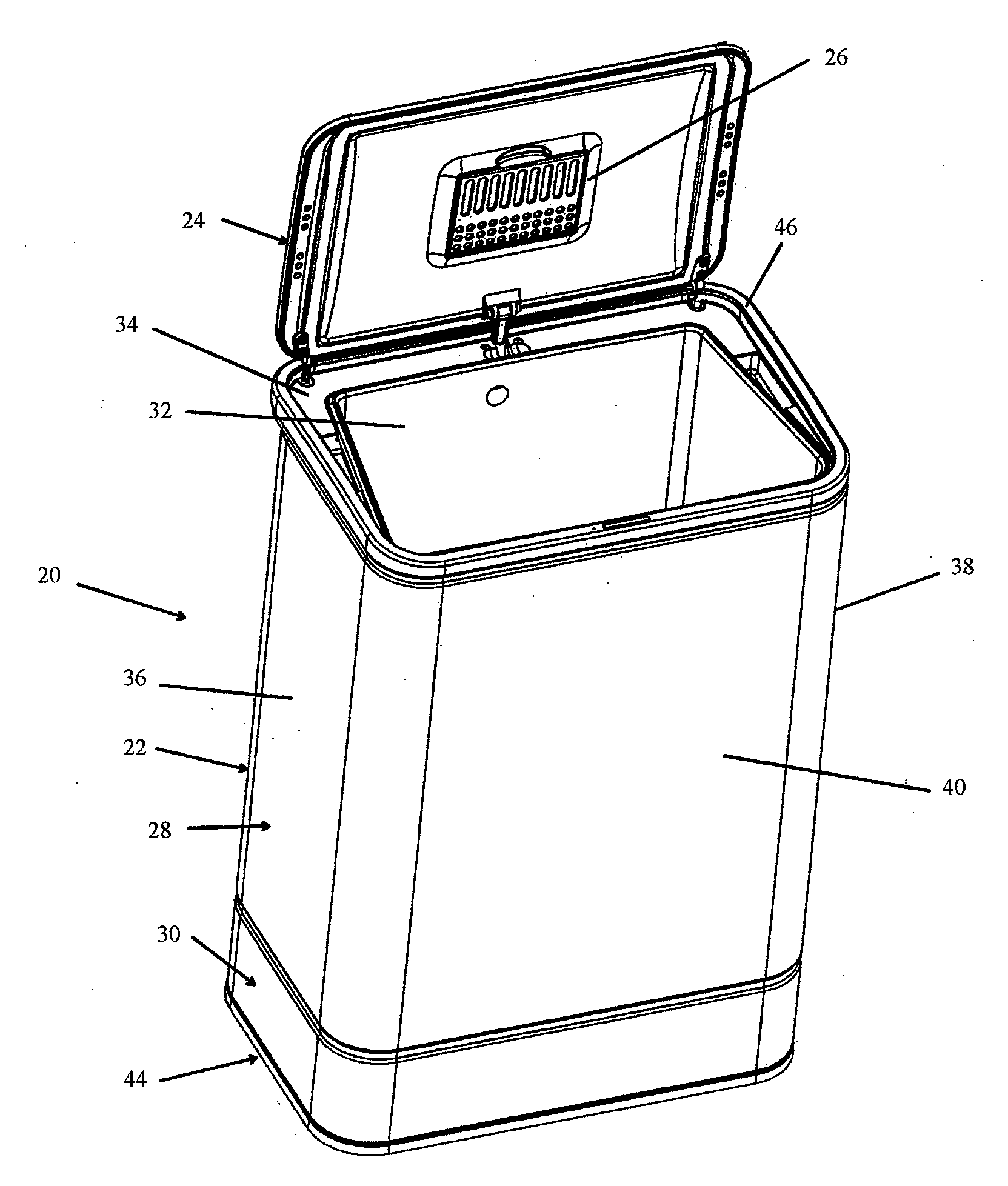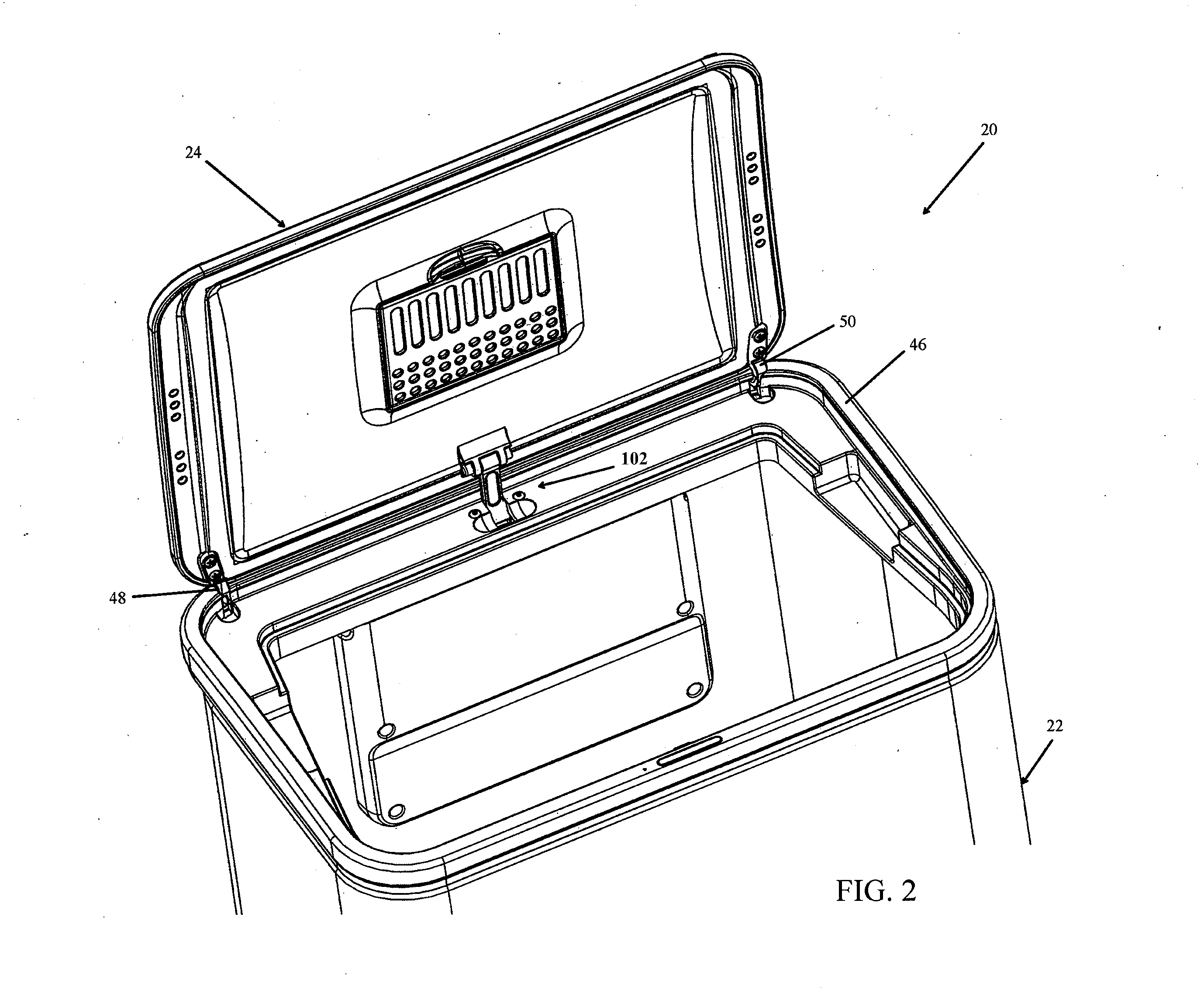Trash cans with variable gearing assemblies
a technology of variable gearing and trash cans, which is applied in the field of power transfer devices, can solve the problems of motor or battery wear, failure, and failure of current trash cans with power operated lids, and achieve the effect of accelerating the angular velocity of the lid
- Summary
- Abstract
- Description
- Claims
- Application Information
AI Technical Summary
Benefits of technology
Problems solved by technology
Method used
Image
Examples
Embodiment Construction
[0042]Certain embodiments of a system for opening and closing a lid or door of a refuse receptacle (e.g., a trash can) or other device are disclosed. The present disclosure describes certain embodiments in the context of a domestic trash can, due to particular utility in that context. However, the subject matter of the present disclosure can be used in many other contexts as well, such as commercial trash cans, doors, windows, security gates, and other larger doors or lids, as well as doors or lids for smaller devices, such as high precision scales, computer drives, etc. The embodiments and / or components thereof can be implemented in powered or manually-operated systems.
[0043]With reference to FIGS. 1 and 2, a trash can assembly 20 can include an outer shell component 22 and lid 24. The lid 24 can include door components 26, such as an air filter. The trash can assembly 20 can be configured to rest on a floor, and can be of varying heights and widths depending on, among other things...
PUM
 Login to View More
Login to View More Abstract
Description
Claims
Application Information
 Login to View More
Login to View More - R&D
- Intellectual Property
- Life Sciences
- Materials
- Tech Scout
- Unparalleled Data Quality
- Higher Quality Content
- 60% Fewer Hallucinations
Browse by: Latest US Patents, China's latest patents, Technical Efficacy Thesaurus, Application Domain, Technology Topic, Popular Technical Reports.
© 2025 PatSnap. All rights reserved.Legal|Privacy policy|Modern Slavery Act Transparency Statement|Sitemap|About US| Contact US: help@patsnap.com



